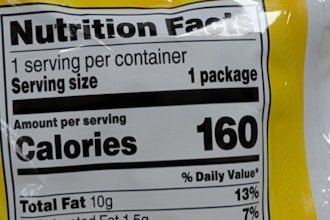
On March 22, the U.S. Food and Drug Administration published a notice to clarify that the effectiveness of certain provisions of the yogurt standard of identity final rule have been stayed. The final rule, published on June 11, 2021, amended the standard of identity for yogurt and revoked the definitions and standards of identity for low fat yogurt and nonfat yogurt. Dairy standards of identity are subject to formal rulemaking procedures, which provide a 30-day period for any person adversely affected to file an objection and request for hearing. If objections are properly filed, then the provisions to which objections were made do not go into effect (i.e., are “stayed’). Because the FDA received objections to certain provisions of the final rule within this timeframe, the affected provisions are stayed pending final FDA action on the objections. Additional details can be found in the Federal Register notice.
Original Constituent Update
June 9, 2021
The U.S. Food and Drug Administration is issuing a final rule to amend and modernize the standard of identity for yogurt by allowing for greater flexibilities and technological advances in yogurt production.
This initiative is part of the FDA’s Nutrition Innovation Strategy. Standards of identity set requirements related to the content and production of certain food products. One of the goals of the Nutrition Innovation Strategy is to modernize food standards to maintain the basic nature and nutritional integrity of products while allowing industry flexibility for innovation to produce more healthful foods. The FDA began establishing standards of identity around 1938 to promote honesty and fair dealing in the interest of consumers and since this time has established more than 280 standards for a wide variety of food products.
Currently, the FDA has separate standards of identity for yogurt, lowfat yogurt, and nonfat yogurt. Under the final rule, lowfat yogurt and nonfat yogurt will be covered under FDA’s general definition and standard of identity, which allows nutritionally modified versions of traditional standardized foods.
The final rule expands the allowable ingredients in yogurt, including sweeteners such as agave, and reconstituted forms of basic dairy ingredients. It establishes a minimum amount of live and active cultures yogurt must contain to bear the optional labeling statement “contains live and active cultures” or similar statement. For yogurt treated to inactivate viable microorganisms, the statement “does not contain live and active cultures” is required on the label. Additionally, the final rule supports the many innovations that have already been made in the yogurt marketplace, including continuing to allow manufacturers to fortify yogurts, such as adding vitamins A and D, as long as they meet fortification requirements. The rule also allows various styles or textures of yogurt as long as they meet requirements in the standard of identity.
The action responds, in part, to a citizen petition submitted by the National Yogurt Association, which is now part of the International Dairy Foods Association. The FDA issued a proposed rule on January 15, 2009.
The compliance date of this final rule is January 1, 2024, which is the uniform compliance date for final food labeling regulations issued in 2021 and 2022.






















